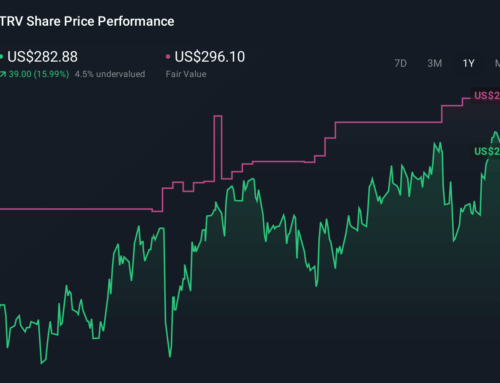Perspective: Energy uncertainty
May 4, 2025
“Energy isn’t a luxury,” Colorado Springs Utilities CEO Travas Deal recently told my Power Gab co-host Jake Fogleman and me. His concern? The direction of Colorado’s energy policy — away from affordable, reliable baseload power and toward costly, intermittent wind and solar.
He’s right. Reliable power is not optional. It’s a matter of life and death. We saw that in Texas during 2021’s Winter Storm Uri when 246 people died amid rolling blackouts that nearly triggered a catastrophic grid collapse.
We’re seeing blackouts in Colorado, too. At the same time, the cost of power in Colorado is skyrocketing. Residential rates have increased over 85% since 2003, greater than inflation.
Yet, Democrat Gov. Jared Polis is doubling down on this dangerous trajectory to enshrine his unrealistic campaign promise of a grid powered by 100% “renewables” into state law.
A draft bill circulating at the Capitol mandates a 95% reduction in greenhouse gas emissions from the electricity sector by 2035 and 100% by 2040. This far exceeds the ambitious targets codified in 2019: 80% carbon emissions reduction by 2030.
The only way to meet this emission goal is to shut down the remaining coal and natural gas baseload; blanket the state with industrial wind turbines, utility-scale solar installations and industrial batteries; force Coloradans into electric vehicles; require heat pumps — and drain Coloradans’ bank accounts.
Massive cost increases
Multiple Independence Institute analyses show that this will result in massive cost increases for Colorado’s working families and small businesses, and decreased reliability.
Environmentalists appealed to consumers by saying wind and solar would save ratepayers money. From the outset, Polis refused to provide a detailed cost analysis of his plan while rejecting the Independence Institute’s 2017 projection that the transition could cost $45 billion. Polis insisted those estimates were inflated and modeled a plan that wasn’t even his. Yet, Polis never offered an alternative figure, saying, instead, he knows it will be less.
Fast forward to 2024. The Colorado Energy Office’s Ascend Analytics report offered an acknowledgment and a sobering warning: Polis’ wind, solar, and battery-only system would require 69,000 MW of new capacity by 2040 and still “barely meet reliability targets.” At $61 billion, it’s also the most expensive scenario studied. That figure doesn’t even include the billions of dollars needed for transmission costs. The system cost will be far greater.
Once again, the Independence Institute did the math. The system cost for Polis’ plan, including storage, necessary overbuild, backup, property taxes, utility profits and new wind and solar costs: $280 to $319 per MWh. That’s compared with $32 for coal and $40 for gas. Wind and solar costs aren’t just expensive — they’re economically destabilizing. Pouring limited capital resources into energy sources that can’t power our grid will cost jobs and depress economic activity.
It gets worse. For backup, the state proposes “clean hydrogen,” which isn’t viable at this point and is also not cheap. The Independence Institute’s hydrogen analysis shows that upgrading infrastructure costs could exceed $70,000 per natural gas customer.
For his draft legislation, Polis still doesn’t provide a cost, but he does include a 1.5% rate cap. That sounds OK. Except it doesn’t include transmission, which will cost Coloradans billions of dollars. The Polis administration still isn’t providing Coloradans with a system cost or what the impact will be per ratepayer.
Fortunately, the Independence Institute did the math. It modeled the full electrification scenario that Polis campaigned on and has been promoting, including home heating and transportation. It’s what Polis hopes to get out of his bill. Our findings: up to $695.3 billion in costs through 2050. Average household electric bills could hit $907 per month, peaking at $1,279 in 2040. Since, he’s accelerating the timeline, those costs will be higher.
Breaking point
Already, Colorado has the highest residential electricity rates in the Mountain West. That’s a significant change from Colorado’s historically lowest rates. Our 2024 Energy Fast Facts report found average residential rates exceeding 15 cents per kilowatt-hour — well above neighboring states.
Denver and the state’s aggressive climate regulations are suffocating commercial building and economic development. A new study from NAIOP, which represents the national commercial real estate industry, shows that Colorado’s commercial development sector has sharply declined in economic contributions, dropping 55% from $14.81 billion to $6.67 billion in one year. In contrast, neighboring Utah, which prioritizes reliability and affordability, saw significant economic gains from commercial development, according to a Denver Gazette report.
The situation prompted developer Andy Feinstein to tell the Gazette, “I can’t do business in Denver now.”
At the same time, reliability is faltering. One Denver developer told the Denver Post in 2024: “Power outages are my No. 1 concern with the project right now, besides finance.”
In April 2024, a blackout cost a Colorado business $12,212 per MWh. Our analysis shows that even if Coloradans spend the projected billions for wind, solar, and batteries, they’ll still have to endure blackouts — some as long as 24 hours based on historical weather patterns.
Utilities are also raising red flags. The state is retiring reliable baseload faster than it is being replaced, and what’s being added often can’t run when we need it most. According to Xcel Energy’s 2024 resource adequacy report, the company plans to retire its remaining 1,650 MW of coal and another 784 MW of natural gas within five years. These losses will create a capacity shortfall of nearly 850 MW by the decade’s end.
Part of Colorado’s strategy is to import power from other states. However, during regional weather events, our neighbors won’t have the power to sell us. That is part of what happened to multiple mid-Atlantic states and the southeast United States on Christmas Eve in 2022, which resulted in blackouts in several states.
Further, compelled baseload retirements are happening nationwide, putting the grid at risk. Powermag.com reported recent congressional testimony revealed that “the nation’s top grid officials testified…the ability to maintain reliable electric service could falter. Their message was unusually direct: demand is accelerating, supply is lagging, and current tools may not be enough to bridge the gap.”
Life or death
As we’ve seen, the human cost can be very high. Without power, people die. The Colorado Department of Health Care Policy and Financing knows this and is distributing free battery backups to Medicaid patients so their medical devices won’t fail when the grid does.
This is not progress. It’s failure management.
Many states — such as Utah, Arkansas, Arizona, West Virginia, and North Carolina — are enshrining affordability and reliability into law. Colorado, by contrast, clings to a one-dimensional metric of emissions only. We’ve mistaken climate virtue signaling for smart policy, and elected officials happily let ratepayers pay the price.
Beyond price and reliability, Colorado faces another crisis: trust. The Polis administration and legislative Democrats have repeatedly moved the goalposts — with shortened timelines, aggressive mandates, and last-minute legislation without consensus or input. With this latest draft bill, more than 60 groups, including investor-owned utilities, electric co-ops, labor unions, local governments, and business and civic organizations, signed a letter asking the late bill be dropped.
What surprised some in the public likely wasn’t a surprise for the Polis administration. In his October “whole-of-government” directive, the governor quietly abandoned his campaign promise of a bottom-up, market approach, telling select state agencies to align with his push for full electrification of homes, transportation and industry.
The dizzying rate of change in an otherwise glacial industry with 50-year time spans for planning makes me wonder how we got to where we are now.
Going green
Colorado’s energy shift began in 2004 when voters narrowly approved Amendment 37, requiring that 10% of electricity from large investor-owned utilities such as Xcel and Black Hills come from renewable sources by 2015. It was the first voter-approved renewable mandate in the nation.
Republican Gov. Bill Owens (1999–2007) opposed fuel source mandates and instead championed reliable energy resources such as coal, natural gas and the transformative innovations of directional drilling and hydraulic fracturing. He recognized that these energy sources were vital to job creation, economic growth, and a dependable, affordable electric grid.
In 2006, Democrat Bill Ritter ran and won on a “New Energy Economy” platform. It was more than a slogan — it was a top-down reordering of Colorado’s energy priorities. In 2007 alone, Ritter signed over a dozen bills reshaping energy regulation.
One of the most impactful was HB07-1037, which quietly transformed the mission of the Colorado Public Utilities Commission (PUC). Before, the PUC followed a least-cost principle — requiring utilities to select the most affordable, reliable resources. HB07-1037 allowed regulators to consider nonquantifiable factors such as social and environmental values.
PUC Chair Ron Binz championed this new approach, shifting the commission from ratepayer protection and toward regulatory activism. He also blurred ethical lines. In 2010, Binz helped craft and implement HB10-1365, the Clean Air-Clean Jobs Act, which mandated coal plant retirements in favor of natural gas. He negotiated cost recovery deals with Xcel Energy outside public hearings.
Binz did not seek reappointment and later withdrew his 2013 nomination to head the Federal Energy Regulatory Commission amid bipartisan opposition. Yet his legacy lives on in a PUC that prioritizes politics over prudence.
During his tenure, Ritter signed 57 green energy bills, including HB 1001 (2010), which raised the Renewable Energy Standard to 30% by 2020. Ritter called it “a template for the country.” In August 2010, PUC commissioner and then former head of the Governor’s Energy Office (now the CEO) Tom Plant, reported:
“HB10-1001 will create new markets for locally developed renewable energy, it will further grow our utility-scale renewable energy markets, it will mean millions of dollars in property tax revenue to our counties, it will create tens of thousands of new jobs, and it will do all of this while ensuring quality and safety of installations and without increasing the cost of electricity to the bill payer.”
The green jobs never materialized even if the cost increases did. As The Gazette reported: “Colorado fails as the epicenter of green energy,” citing empty industrial parks and shuttered factories once billed as job engines.
Gov. John Hickenlooper (2011–2019), a geologist by training, took a more balanced stance. He defended fracking, filed a lawsuit to block Longmont’s drilling ban and supported methane rules and groundwater testing.
Though he backed renewable energy, he resisted turning energy policy into a battleground. He tried to walk a tightrope — promoting clean energy while maintaining fossil fuel production. That moderation drew criticism from the left and right.
Candidate Polis campaigned for governor on transitioning to 100% renewables by 2040 — claiming it would be market-driven, cost-effective, and free of government coercion. In 2017, Polis dismissed financial concerns, touting a “bottom-up” approach. His actions as governor have been anything but market-based.
In 2019, he signed SB19-236 (the PUC review act) and HB19-1261 (the climate action plan), mandating 26% greenhouse gas reduction by 2025, 80% carbon emissions reduction by 2030, and 90% by 2050.
Legislation in 2023 amended greenhouse gas emissions — calling for a 75% reduction by 2040 and 100% by 2050 across all utilities. Polis’ new draft legislation ups the ante again, requiring 95% greenhouse gas emissions reduction from the electricity sector by 2035 and 100% by 2040.
Nuclear option
To bipartisan cheers, Polis quietly signed HB1040, adding nuclear to the state’s list of clean energy sources. But his pending legislation slashing greenhouse gas emissions speeds up the decarbonization timeline, making nuclear an impossibility in the state.
That’s a mistake. Nuclear is the only proven, dispatchable, zero-emission resource. With a 93% capacity rating, it’s the most reliable resource. Period.
Public support is strong — especially among younger voters. Bipartisan support exists, too, with groups such as the American Conservation Coalition, Independence Institute and Colorado Nuclear Alliance backing deployment.
Our analysis shows that large-scale nuclear (e.g., APR-1400) offers lower system costs than wind and solar with storage. So why exclude it?
Polis seems more interested in appeasing climate fundamentalists such as the Sierra Club, 350.org, and Conservation Colorado than in delivering real solutions. But if Colorado wants to power data centers, AI platforms, and economic growth, nuclear is essential.
Energy policy is about more than emissions — it’s about people. Nowhere is that contrast clearer than in the opposing worldviews of Polis and new U.S. Energy Secretary Chris Wright, former CEO of the Colorado-based Liberty Energy.
Polis views energy almost exclusively through the lens of emissions reduction. His singular focus on achieving “net zero” drives policies that favor intermittent renewables, restrict reliable baseload power, and, oddly, exclude nuclear innovation.
It’s a vision rooted in scarcity and sacrifice — what can only be described as an energy deprivation mindset. Under his vision, Coloradans are expected to accept higher costs, reduced reliability and fewer choices in service of a narrow climate metric.
By contrast, Wright offers a hopeful, human-centered alternative. He makes the moral case for energy abundance and warns of the very real dangers of energy poverty — particularly for low-income families, rural communities, and the medically vulnerable.
His aim isn’t “net zero” — it’s zero energy poverty. He calls net zero a “sinister idea” that causes real-world suffering and deepens inequality. Instead, he envisions a future where clean, affordable, and reliable energy powers opportunity, prosperity and public health.
Other states are moving in that direction. Utah, Arkansas, Arizona, and North Carolina are embedding reliability and affordability into state law. Colorado, by contrast, clings to one-dimensional metrics. We’ve mistaken virtue signaling for sound policy. We’ve traded practical progress for political symbolism—and left ratepayers holding the bill.
The wild card? President Donald Trump’s recent executive orders. These orders challenge state-level discrimination against coal and dispatchable generation, target regulatory overreach on emissions, and push back against forced baseload retirements. Colorado’s energy policy is now on a collision course with the federal vision of energy abundance.
As net-zero ideologues have leveraged legal strategies for decades, proponents of energy abundance, affordability, reliability, and human prosperity might now utilize these executive orders as a legal foundation to challenge and potentially delay Polis’ aggressive emissions agenda — an agenda that risks significant economic consequences for the state of Colorado.
A path forward
What Coloradans rarely hear is that we don’t have to choose between a thriving economy and a healthy environment. We can have both.
According to the U.S. Energy Information Administration, American energy production has tripled since 1950. In December 2023, the U.S. set a record — producing 13.3 million barrels of oil per day, despite a 69% decline in active oil rigs. Meanwhile, we’ve made historic environmental progress: the Environmental Protection Agency reports that between 1970 and 2020, emissions of the six most common air pollutants dropped by 78%. We’ve also dramatically improved water quality across the country.
Reliable, affordable energy powers everything — clean water, health care, communication, transportation. Without it, modern life collapses.
To avoid economic decline and out-migration, Colorado must:
• Stop forced retirements of baseload power
• Reinstate the least-cost planning principle
• Prioritize reliability and grid resilience
• Stop pretending wind and solar are cheaper — they’re not when system costs are included
• Give ratepayers a real seat at the decision-making table
Bottom line: We’ve reduced emissions and become better environmental stewards not by restricting energy, but by powering progress with technology made possible with affordable, reliable power. That means choosing innovation and abundance over ideology.
If we don’t course-correct soon, get a backup generator. What’s coming won’t just be expensive — it could be dangerous.
Amy Oliver Cooke is the president and board chair of Always On Energy Research, a nonprofit specializing in energy cost modeling, reliability analysis and policy impact. She’s the energy fellow for the State Policy Network and directs energy and environmental policy for the Independence Institute.
Search
RECENT PRESS RELEASES
Related Post



